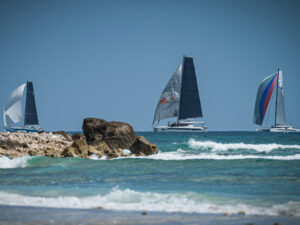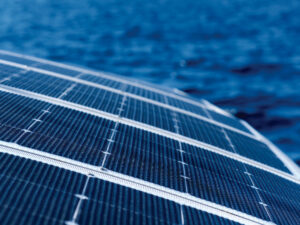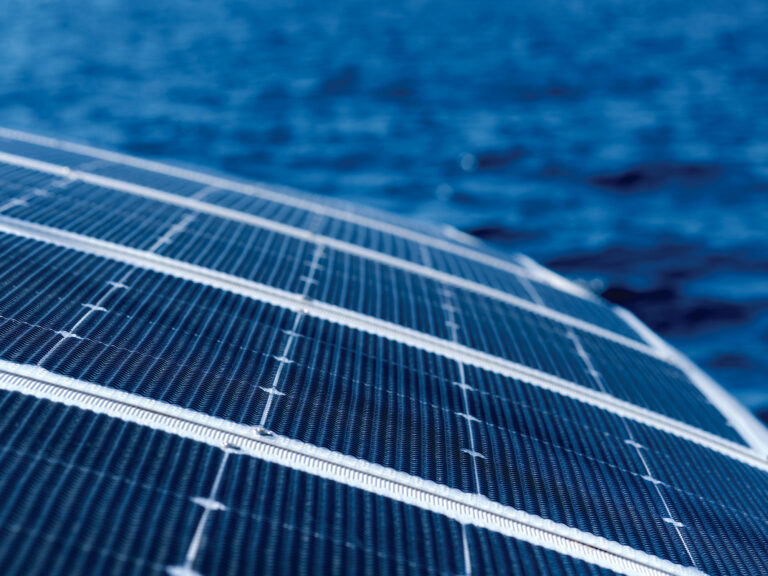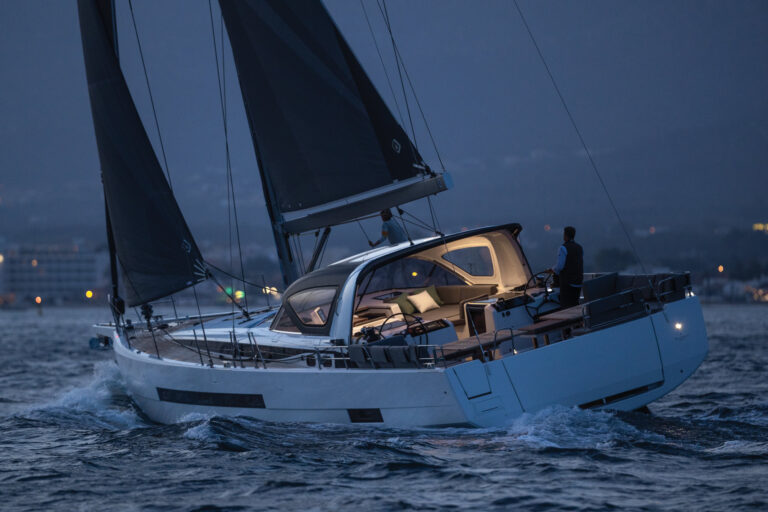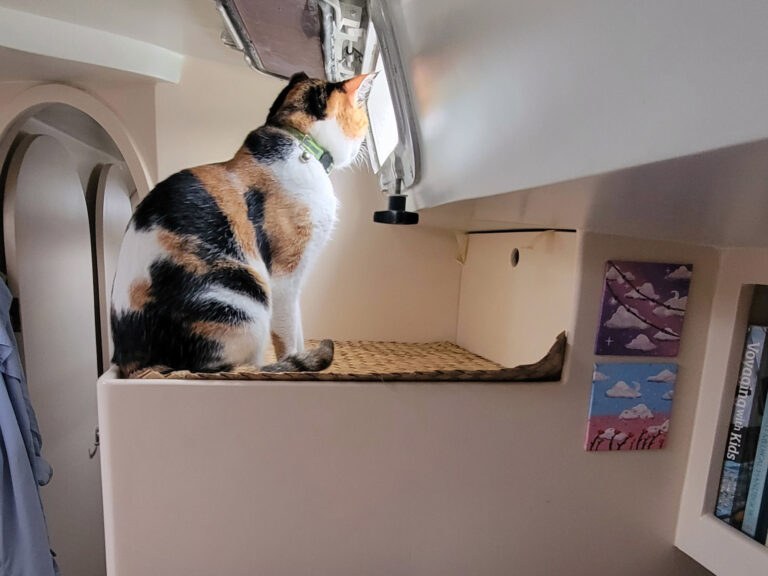
While I’ve almost never lived ashore, I have visited my wife’s mother’s house in Chicago, where she would send me scurrying to the basement to hastily retrieve odd, nearly forgotten household objects. Bilges are like that—we know they’re there, we stow stuff in them, and we seldom think about them. When we do think of them, it’s usually in a negative way: because they stink, are oily or have water leaking into them.
Let’s start off with one central, indisputable fact: The bilges of a daysailer and a liveaboard vessel have little in common. Example: It is possible to keep a daysailer’s bilges sweet, but this is almost impossible aboard a vessel inhabited by Homo sapiens, a notoriously messy species.
The problem starts with the largest organ in our body: skin. We shed our entire epidermis every two to four weeks. Each hour, your average sailor sheds around 200 million skin cells. This isn’t mentioning the 100 or so hairs we shed a day—unless we are stressed, when we’ll shed considerably more.
Don’t worry: We’re not going below the hirsute belt in our discussion. This is a family magazine. Ditto our nasal mucous membranes. Offshore, there’s little actual dirt, but there’s a lot of salt in the air. And, in the tropics, sailors sweat profusely—especially when cranking sheet winches and hoisting sails.
My wife, Carolyn—of Sicilian descent—is a gourmet cook. She also bakes daily offshore: bread every other day, and tasty treats in between. We’re both hedonists in every way. I always grab a cookie, cupcake, brownie or doughnut as I dash below. (No buns—I don’t grab buns!) Often, it’s rough in the mid-Pacific. My doughnut and I are tossed around. We bounce off bulkheads, companionway ladders and nav tables. Sugar and crumbs fly.
Ganesh, our 43-foot ketch, has been to a dock for only 24 hours in the past three years—when some rich guests insisted that we visit a posh marina so they could take selfies with megayachts in the background. (No, they weren’t invited back.)
Anyway, while we seldom touch shore and have neither rats nor roaches, we do bring fresh food out to the boat, and thus have ants. And these sneaky ants do what ants do: They play nocturnal shell games with our crumbs.
I know, I know…that’s gruesome to think about, but it’s a reality of our cruising lives. Yes, we can poison them to death, but not without poisoning ourselves to some degree, something that we’re not eager to do. I’m a child of the 1960s. I have no brain cells to squander.
Now, I hate to admit it, dear reader, but we regularly smear ourselves with various goop. Sunblock, for example. Cold cream. Aloe. Talcum powder. Hairspray. Mascara. Lipstick. Ditto the boat. We’re always smearing chemicals and compounds inside and outside the vessel. Hell, Carolyn just spent four days sanding the million square feet of varnish (well, that’s what the square footage seemed like with numb hands) in our aft cabin alone.
We have clothes, bedsheets, blankets—and we all know that fabrics shed.
Have you ever seen an Italian woman knead bread dough in 18-foot seas? I have, and it’s a messy business. Ditto frying flying fish for breakfast.
Here’s another secret nobody speaks about from the days of yore when vessels were wood and the men were steel: In the deep, dank, dark bilges of the schooner Elizabeth that I grew up aboard were… actual fish. Their fertilized eggs would evidently get sucked in through our rotten butt blocks and soft plank ends.
At least the fish knew their place and were silent. Not so the crabs. The sound of their scurrying at night terrified me as a child.
How many leaks did Elizabeth have? Well, as my father used to say back in the 1950s, “more leaks than the White House.” He loved to joke. Each time he’d spot a spaghetti colander while shopping, he’d wave it around and say loudly, “This reminds me of an ol’ carvel-planked vessel I used to own.”
If all this weren’t awful enough, suspended above an 8-foot section of our bilge on Ganesh is a Perkins M92B that brims with salt water, coolant, diesel fuel and lube oil—all under pressureat a temperature near boiling.
Now, of course, all offshore sailors know to sit down in the head. Sitting down is a must. Not sitting down is one of the few things that will get you tossed off Ganesh immediately. Sitting is an absolute rule.
I’m not alone in this. There’s a famously fastidious female yacht-racing skipper in San Francisco Bay who, when a male sailor goes below, cautions him with the business end of a sharp fish gaff should he think about standing, swaying and potentially soaking the entire compartment in yellow as the boat rolls.
Damn, yachting is a complicated sport.
But all this debris, garbage, trash, dust, dirt, dribble and hair ends up in the bilge pump—often choking it into submission. Also, a bilge at sea often has oily, filthy water in it that is being sloshed with great force under bunks and other storage areas. Yuck.
Back in the day of wooden boats, bilges were deep because the keel had to be supported. Nowadays, because many production builders have realized that supporting their detachable keels is really a viable option for only the most expensive yachts, bilges have become as shallow as their naval architects.
This brings us to the subject of bilge chains and limber holes. On wooden boats, each frame (there are no ribs on a boat, dammit!) ended on an athwartship “floor” timber that spanned the bilge, tied together the frames, supported the garboard, and held the keelson in place. Thus a “bilge” wasn’t one bilge so much as many bilges. If you weren’t careful, they didn’t drain. It was common while sinking (I’ve been in the process of sinking many times) for the compartment with the pump to be dry while all the others brimmed with water.
Thus, limber holes were drilled in these “floor timbers” to allow the water to drain. Why the name? I don’t know for sure, but you had to be pretty limber to clean them in a full gale while sinking.
Therefore, on Elizabeth, if you started to sink and the compartment that the bilge pump was in was dry, you just reached down and yanked the spring-loaded bilge chain. Instantly, the limber holes would be cleared.
Now, here’s what happens when a modern boat sinks: Everyone is having a great time in the cockpit, and the floorboards begin to float. At the same time, a million other things begin to float: clothes, foodstuff, plastics, fabrics. Eventually, someone glances below and says, “Oh, dear!”
The captain, of course, does the worst possible thing—as a rule, he flips on his high-capacity, 1,500-gallon-per-hour bilge pump, which stops within minutes because someone’s long-lost skivvies have been sucked into it.
Here’s the truth of it: If your vessel is taking water and you are pumping it out as fast as it comes in, you are leaking. You might even be leaking massively—but in this situation, the status quo is being maintained. However, once you’re leaking faster than you can pump out the water, well, you’re sinking.
And then, it is time to panic. A common way to panic is for a crewmember to jump below and snap his ankle on an unseen object under a wet floorboard that surfs away. Another is for the skipper to slip on the oily surfaces.
While spotting the leak is dead-simple aboard Ganesh because it is equipped with a bilge alarm that rings if she takes aboard more than a few gallons, most vessels don’t have such an early-warning system. Once the floorboards float and the bilge sump is awash, it is almost impossible to find the leak, let alone stop it.
Don’t forget: Everything in the boat that is buoyant will be floating. You won’t be wading around in water so much as logbooks, pillows, old wedding photos, shattered bottles of acetone, oozing boxes of couscous, and old clothes.
We met two guys in South America who developed instant post-traumatic stress disorder in exactly this situation when one said to the other while foundering off the coast of Colombia, “We’re gonna die; what could be worse?” just as the half-full holding tank broke to the surface inside the waterlogged vessel, struck the fore bulkhead, split open and disgorged its contents.
“You had to say it, didn’t you?!” the other shipmate screamed.
Oh, there’s never a dull moment offshore. You really haven’t lived until you’ve been shouting your lat/lon into the VHF radio as your main battery banks go underwater.
And to think that we haven’t even gotten to the subject of stuffing boxes. There are two types: one that drips, drips, drips a sailor into the psych ward, and the modern, more expensive type that sinks the vessel within minutes of having something falling on its always-ready-to-gush bellows.
Are some of your seacocks frozen open? Are you sure? Why not, in an emergency, grab one by the handle and snap off its through-hull, just to be sure? Speed impellers are other fun bilge gizmos that have enlivened many an offshore passage.
One thing I love is meeting a new yachtie who tells me, proudly, that his bilge is empty. I smile to myself as I think, No, it is not; it’s filled with terror. You just don’t know it yet.
Fatty and Carolyn are currently in Langkawi, Malaysia, slapping paint on their bottom. (Did that come out right?)

